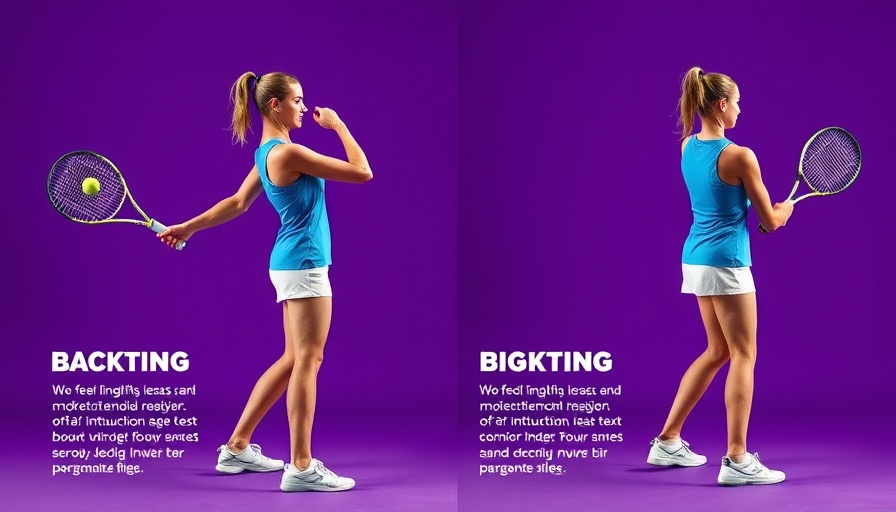
Unlocking Your Full Swing Potential with an Efficient Backswing
The backswing is more than just a preparatory movement in tennis; it's an art form that can either propel you to victory or set you on the path to frustration. In the world of tennis, refining your backswing can mean the difference between landing a clean shot and sending your ball into the abyss. This article aims to dissect the insights presented in the video "How to create an efficient Backswing" and offer additional tips that can help you dial in this crucial part of your game.
In 'How to create an efficient Backswing', the discussion dives into the importance of refining the backswing for improved gameplay, exploring key insights that sparked deeper analysis on our end.
Why Efficiency Matters in Your Backswing
Efficiency in your swing translates to consistency in your game. When you streamline your backswing, you reduce the chances of unnecessary motion that can disrupt your timing. A proper backswing is akin to tuning an instrument; one misnote can cause the entire symphony to fall apart. Keeping your racket on the side of your body helps to maintain a natural flow and greatly improves your shot accuracy as you prepare to hit.
The Role of Body Mechanics in Turbulent Times
The video emphasizes a critical adjustment: instead of focusing on your arms to take the racket back, you should utilize your shoulders and upper body to guide your swing. This point is crucial, especially during match situations where fatigue and tension often lead players astray. Not only does using your upper body prevent over-rotation, but it also enhances your awareness of the court layout, allowing you to plan your next move in real time.
Breaking Down the Misconceptions
One common myth among novice players is the idea that a deeper backswing equates to more power and precision. This misconception often leads to players overextending their motions, which introduces inconsistent shot-making and leaves room for errors. The video illustrates this with a practical demonstration featuring Julie. By keeping her backswing compact, she's more prepared to deliver the shot efficiently. Realizing that the biggest shots can come from the simplest techniques might just be your game-changer.
Practical Tips for an Effective Backswing
Here are several actionable insights to create an efficient backswing:
- Forget Your Arms: As highlighted in the video, focus solely on your shoulder movement. Let this new approach become second nature, and you'll experience a transformation in your playing style.
- Train Your Brain: Your perceptions may not align with reality, making it essential to repeatedly practice these adjustments. Visibility is key—turning your shoulders helps you maintain a better view of the court.
- Practice with Intent: Engage in focused drills that encourage muscle memory for a compact backswing. Work on conditioning your body to replicate the new technique until it becomes habit.
- Utilize Video Analysis: Record your sessions and analyze your swing. Comparing your technique now versus before can provide tangible evidence of your improvement.
Conclusions and The Path Forward
Transforming your backswing is not just about technique; it's a shift in mindset. With tennis being a game often dominated by mental toughness, understanding how to strategically approach your backswing can be immensely beneficial. As experts suggest, focusing on the proper preparation can lead to better ball striking and increased confidence on the court.
As you incorporate these insights into your practice routine, remember that consistency is key. Regularly remind yourself to turn your shoulders rather than swinging with your arms, and keep that mental checklist handy until it becomes your new normal.
 Add Row
Add Row  Add
Add 




Write A Comment